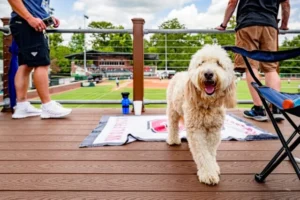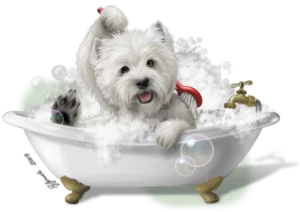Pictures of Normal Swelling After Neuter

Pictures of Normal Swelling After Neuter:- Neutering, also known as desexing, is a common surgical procedure performed on male dogs in Australia to prevent them from reproducing. This procedure, which involves the removal of the dog’s testicles, offers numerous benefits for both pets and their owners. Despite the advantages, there are also potential risks and necessary post-operative care that dog owners should be aware of to ensure a smooth recovery for their pets.
Why Neuter Your Dog?
One of the most significant benefits of neutering is its role in reducing the number of unwanted puppies born each year. Animal shelters across the country are often overwhelmed with abandoned or surrendered pets, and neutering is a key strategy in preventing this overpopulation issue.

In addition to population control, neutering can contribute to a dog’s overall health and longevity. Studies have shown that neutered dogs are less likely to develop certain health problems, such as testicular cancer and prostate diseases.
Moreover, neutering can also have a positive effect on a dog’s behavior. Intact male dogs often exhibit behaviors linked to their drive to reproduce, such as roaming, marking territory, or showing aggression towards other dogs. While neutering doesn’t guarantee a complete change in behavior, it can significantly reduce the likelihood of these behaviors. This makes neutered dogs easier to manage, and in some cases, more pleasant to live with.
Potential Risks and Complications
Pictures of Normal Swelling After Neuter:- Although neutering is a routine procedure, it is still surgery, and like all surgeries, there are risks involved. One of the primary concerns following any surgery is the potential for infection. As a dog owner, it’s important to be aware of the signs of infection so you can seek prompt veterinary care if needed. Common symptoms of post-surgical infection include swelling, redness, or discharge around the incision site, as well as fever or lethargy. If any of these symptoms arise, it’s crucial to contact your veterinarian immediately.

Aside from infections, other complications can include swelling of the scrotal area, especially in older dogs where the tissue may not shrink as quickly after the surgery. In rare cases, if complications persist, an additional procedure called scrotal ablation may be necessary to remove the scrotal tissue. Fortunately, serious complications are uncommon, and with proper care, most dogs recover quickly from neutering.
Post-Surgery Care
Pictures of Normal Swelling After Neuter:- Caring for your dog after neutering is crucial to ensuring a smooth recovery. Your veterinarian will typically provide pain medications and anti-inflammatory drugs to manage any post-operative discomfort. Even if your dog seems energetic and ready to resume normal activities, it’s important to adhere to your vet’s recommendations. Pain is often easier to prevent than to treat once it escalates, so providing the prescribed medications as directed is essential.
For at least 24 hours following the procedure, it’s important to keep a close eye on your dog. Anesthesia can make pets groggy, and they may be more susceptible to nausea. Offer only a small amount of water when you first get home, and feed your dog a reduced portion of food during their first meal to avoid stomach upset. Additionally, your dog may have a small bandage on their leg from where an IV catheter was placed during surgery. This can usually be removed a few hours after you arrive home.
One of the most common post-surgery behaviors you might notice is your dog attempting to lick or chew the incision site. This can introduce bacteria and increase the risk of infection, so it’s essential to prevent your dog from licking the wound. In most cases, veterinarians recommend the use of an Elizabethan collar (also known as the “cone of shame”) to keep your dog from reaching the incision site while it heals.
Intraoperative Risks and Anesthesia
Pictures of Normal Swelling After Neuter:- Although neutering is generally considered low-risk, the use of anesthesia always carries some level of risk. A 1998 study found that approximately 2.1% of dogs undergoing anesthesia experience complications, with a mortality rate of 0.11%. While these figures are low, it’s important for pet owners to be aware of the risks.
To minimize these risks, veterinarians take several precautions. Elective procedures like neutering are typically reserved for healthy pets, and any underlying illnesses are addressed before surgery. Veterinarians also use advanced monitoring techniques, such as pulse oximetry and blood pressure measurements, to track a dog’s vital signs throughout the procedure. These precautions help ensure that any anesthesia-related issues are detected and addressed early on.

The First 10 Days: Critical Recovery Period
The first 10 days after your dog’s surgery are critical for ensuring a smooth recovery. Here are a few important rules to follow:
1. Keep your dog calm:
Restrict your dog’s activity level during the recovery period. Too much excitement or physical exertion can put pressure on the incision site and slow down the healing process.
2. Maintain a clean environment:
Make sure your dog is kept indoors in a clean, quiet space where they can rest without disturbance. Avoid giving your dog a bath or using flea treatments during the first-week post-surgery, as this can interfere with the healing process.
3. Limit outdoor activity:
When taking your dog outside, always use a leash and avoid letting them run or jump. Vigorous exercise can strain the surgical site and increase the risk of complications.
4. Monitor the incision:
Keep an eye on the incision for any signs of infection, such as redness, swelling, or discharge. It’s also normal for the area around the incision to bruise slightly, but excessive bruising should be reported to your veterinarian.
Following these guidelines will help your dog recover from neutering without complications. It’s also important to remember that while neutering is a routine procedure, each dog’s recovery experience is different. Some dogs bounce back quickly, while others may take a few days to return to their normal selves. By providing the necessary care and following your veterinarian’s instructions, you can ensure your dog heals properly and enjoys the long-term benefits of being neutered.
In conclusion, neutering your dog is a responsible and beneficial choice for both their health and the broader community. With the right post-operative care, most dogs recover quickly and go on to live healthier, happier lives.
Also Read:-




